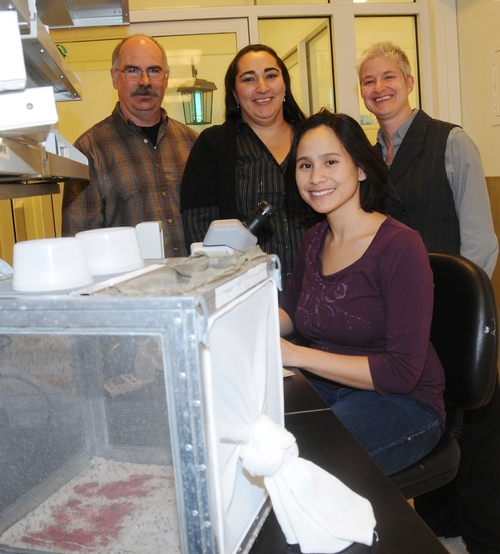
They're probably not, though. They're too busy doing research.
They're the UC Davis scientists who worked on a malaria-proof mosquito that just made Time Magazine’s “50 Best Inventions of 2010.”
It's listed as No. 1 in Time Magazine’s Health and Medicine Category.
Back pedal to July of 2010. The collaborative team of UC Davis and University of Arizona researchers published their work on their malaria-proof mosquito in the journal Public Library of Science Pathogens (PLOS).
The research drew international attention because globally, malaria infects some 250 million people annually and kills more than a million a year, primarily in Africa.
"A malaria-proof mosquito?" Could it be? Yes!
“The transgenic mosquitoes were developed at the University of Arizona and we performed the malaria parasite infection studies here at UC Davis,” said malaria researcher and professor Shirley Luckhart (above) of the Department of Medical Microbiology and Immunology and an advisor in the Entomology Graduate Program.
Among the 11 scientists co-authoring the paper were four UC Davis researchers: Luckhart; professor Edwin Lewis, who has a joint appointment in the Entomology and Nematology departments; Entomology doctoral student Anna Drexler who studies with major professor Luckhart; and postdoctoral scholar Nazzy Pakpour of the Department of Medical Microbiology and Immunology.
“This is the first time anyone has created a transgenic mosquito line that has two important features for malaria transmission control: (1) reduced lifespan, and (2) complete resistance to infection with the human malaria parasite Plasmodium falciparum,” Luckhart said.
“We know that one mosquito phenotype,” Luckhart said, “might not be enough to block transmission – that is, selection could result in parasites that develop more quickly or are more virulent to overcome one or the other phenotype, but the chance that parasites could evolve to evade both would be very small. We’re working on the mechanism of anti-parasite resistance right now and we have some tantalizing results that suggest that the effect on lifespan and immunity are linked through some major metabolic changes in the transgenic mosquitoes.”
As of Jan. 7, their scientific paper, “Activation of Akt Signaling Reduces the Prevalence and Intensity of Malaria Parasite Infection and Lifespan in Anopheles stephensi Mosquitoes, has generated nearly 7000 article views and has drawn extensive news coverage.
In a July 17 news article headlined “Malaria-Proof Mosquito Created,” science writer Eric Bland of ABC News pointed out that scientists had “engineered a genetic ‘on switch' that permanently activates a malaria-destroying response.”
“If these mosquitoes,” Bland wrote, “are successfully introduced into the wild, they could prevent millions of people from becoming infected with life-threatening Plasmodium -- the parasite that causes malaria.”
Time Magazine reporter Jeffrey Kluger described 2010 as "a bad year to be a mosquito. The world's most annoying insect is responsible for 250 million cases of malaria per year — and 1 million deaths. But scientists...have genetically engineered a mosquito that's immune to the Plasmodium parasite, the malaria-causing agent it transmits with its bite. The next step is to make the new mosquito hardier than the ordinary kind, then release it into the wild (perhaps within 10 years), where it will displace the deadly variety."
Yes, indeed, 2010 was a very bad year to be a skeeter.
And the future for these blood-sucking insects (the females need a blood meal to develop their eggs) promises to be even worse.
Attached Images:

UC Davis Team